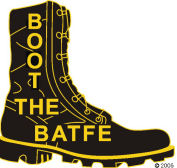

Quick Draw or Slow
The Situation Affects the Upshot
By Alan Korwin. Dec 24, 2021
JPFO's Bill of Rights Sentinel editor, Alan Korwin, a good friend of Massad Ayoob, has a different point of view about staying armed in your own home. ("Why Wearing a Gun in the Home Is a Good Idea" - see article from 12/20/21)
While Mass' points are well taken, Korwin believes they are unjustified compared to the degree of threat, the frequency of events and what really happens in most armed confrontations. "I have interviewed many people who have had to bring a gun to bear, and it is almost never the instantaneous-draw-to-survive the industry and some experts promote. You hear some suspicious warning sounds or see things, the hair on your neck stands up, your alert level rises, and you prepare." At least that's what his experience showed, so he wrote this piece for USCCA's Concealed Carry Magazine.
![]()
Muzzle confrontations fall into two basic scenarios. A significant portion of this magazine and the self-defense industry is built around the first, the quick-draw model. The holsters, sidearms, training programs and related thinking have a built-in skew toward bringing a gun to bear quickly in an emergency.
This is good. It is a valuable skill to learn and cultivate. When it is needed nothing else will substitute. Tons of practice and understanding must precede the ability to perform that task with confidence, and well. Some people are better at it than others, the same as anything requiring a degree of athleticism. Some folks are more concerned about it than others too. The absurd politically correct contingent making trouble in America don’t prefer to hear this, but interest in the quick-response model skews male. It just does. Affirmative free-market efforts to increase diversity here are underway.
On the other side of draw-or-die is the slow draw. Bringing a gun to bear because you anticipate trouble and have decided to adopt an armed posture is a different ballgame. It very well may not involve a holster at all. Arming up at home because of suspicious activity nearby, unexplained noise, environmental factors like power outages, flooding, storm conditions, hovering helicopters or police responders, these are conditions tolerating more thought and reflection. A different mindset and training are appropriate, and firearm instructors have seen increases in both women and men interested in having the presence of a firearm for safety at home, different from immediate response on the street.
..... 
![]()

























